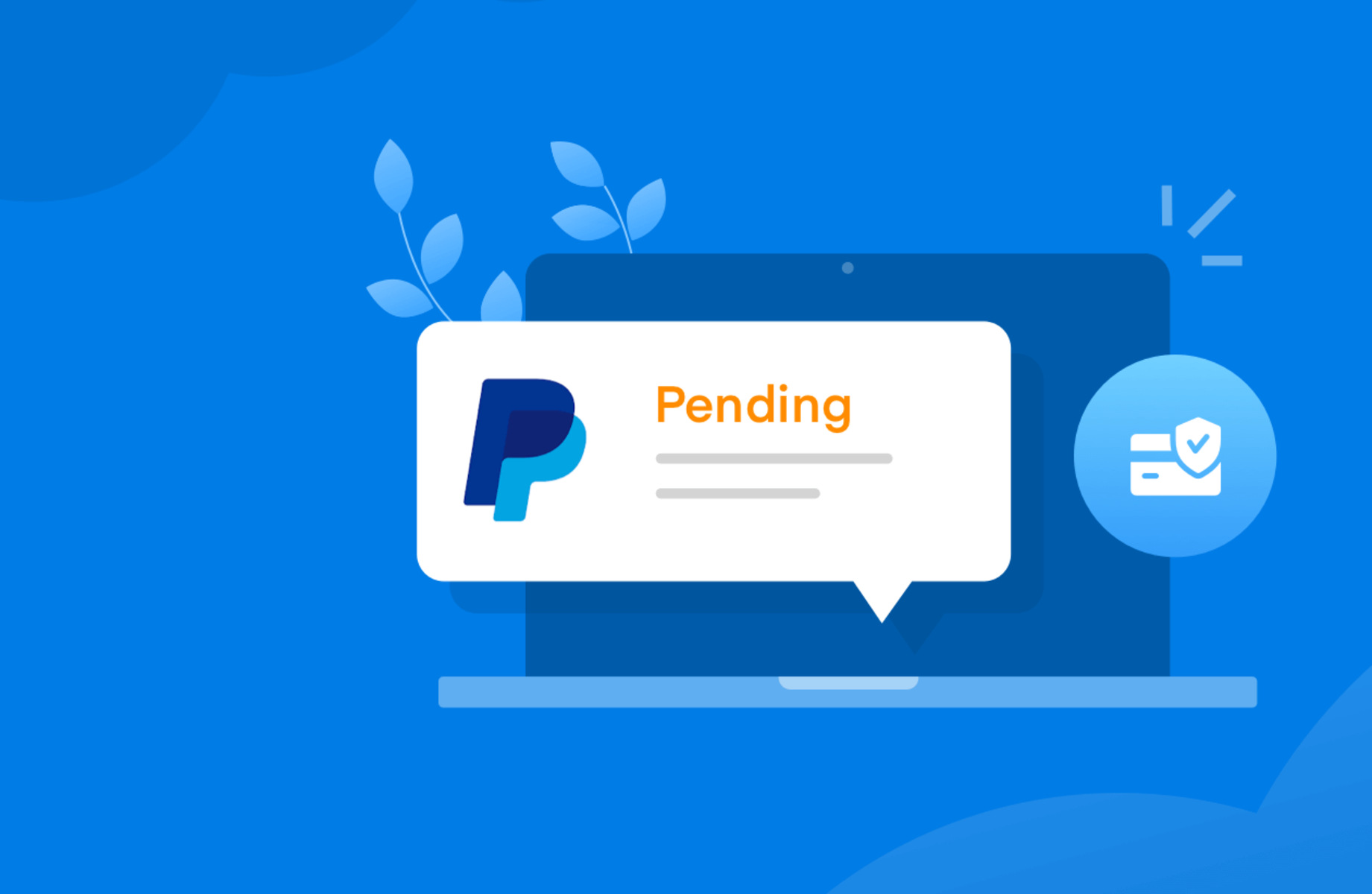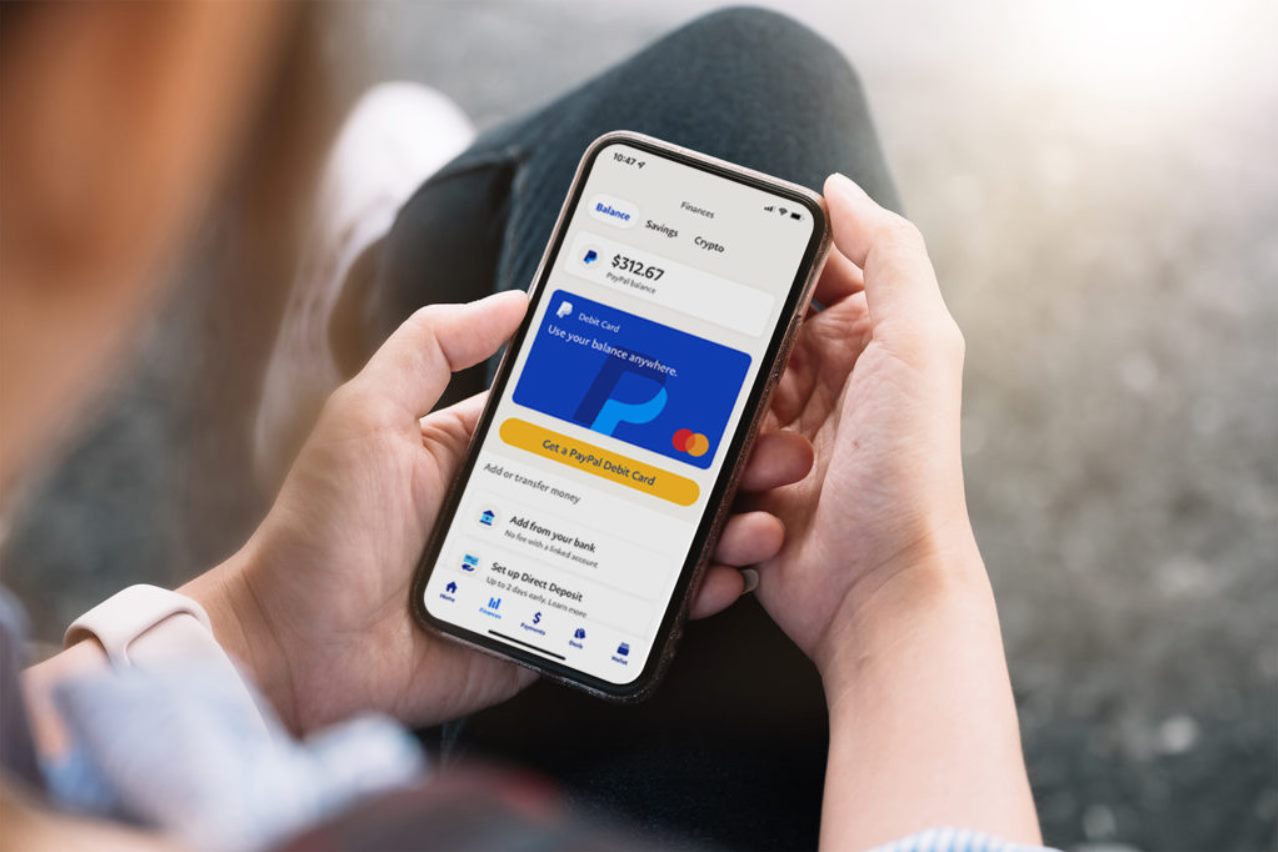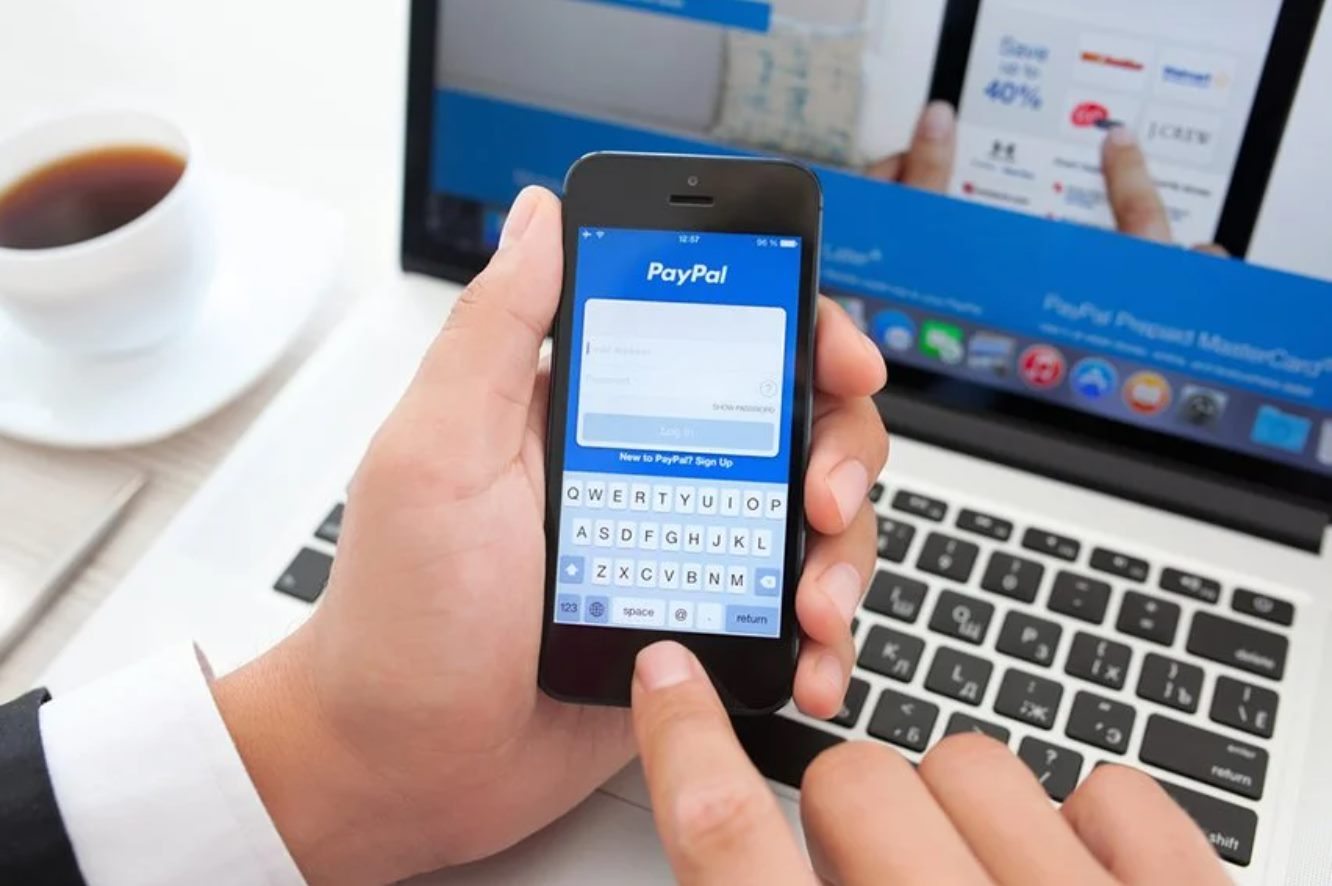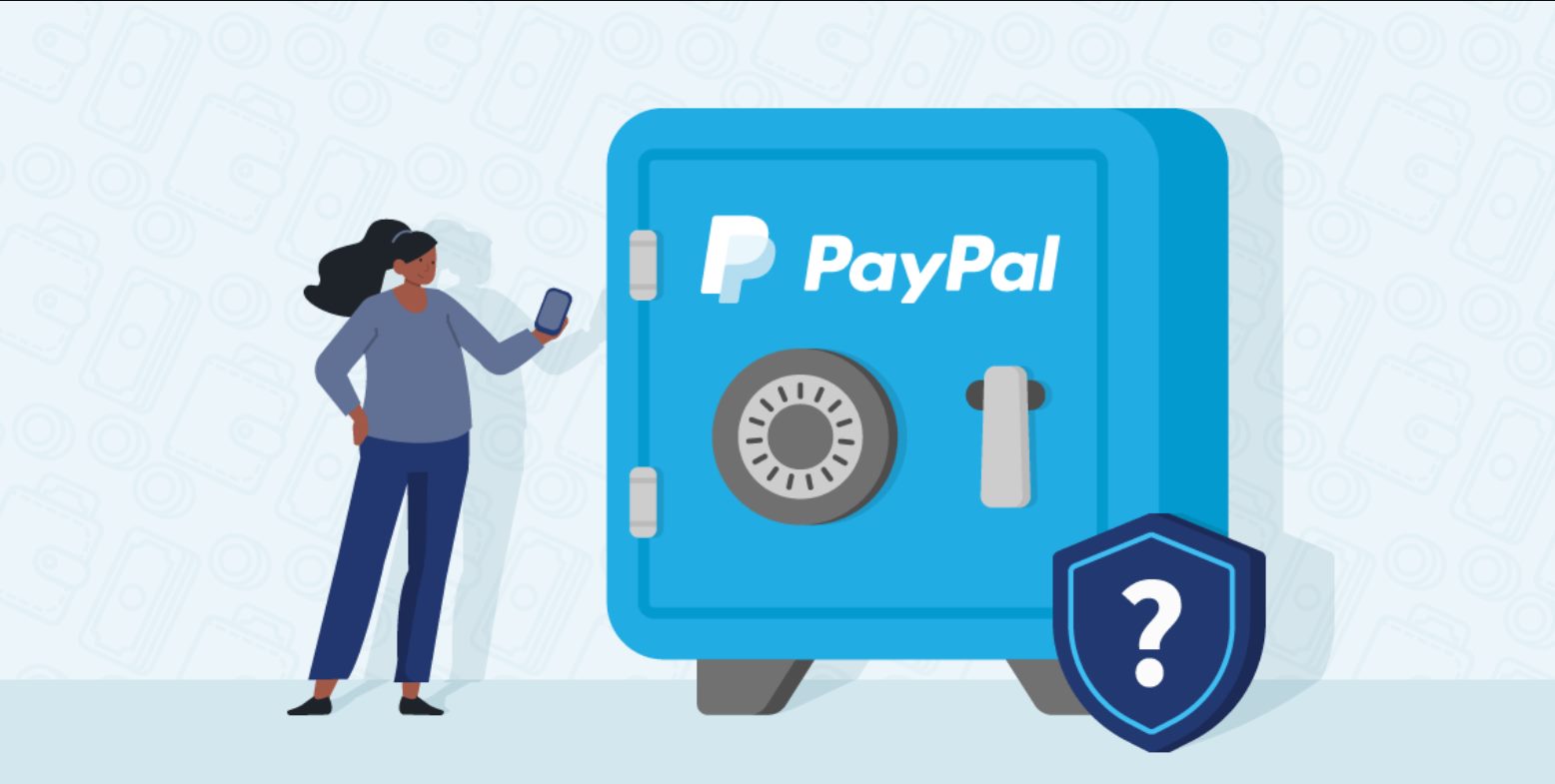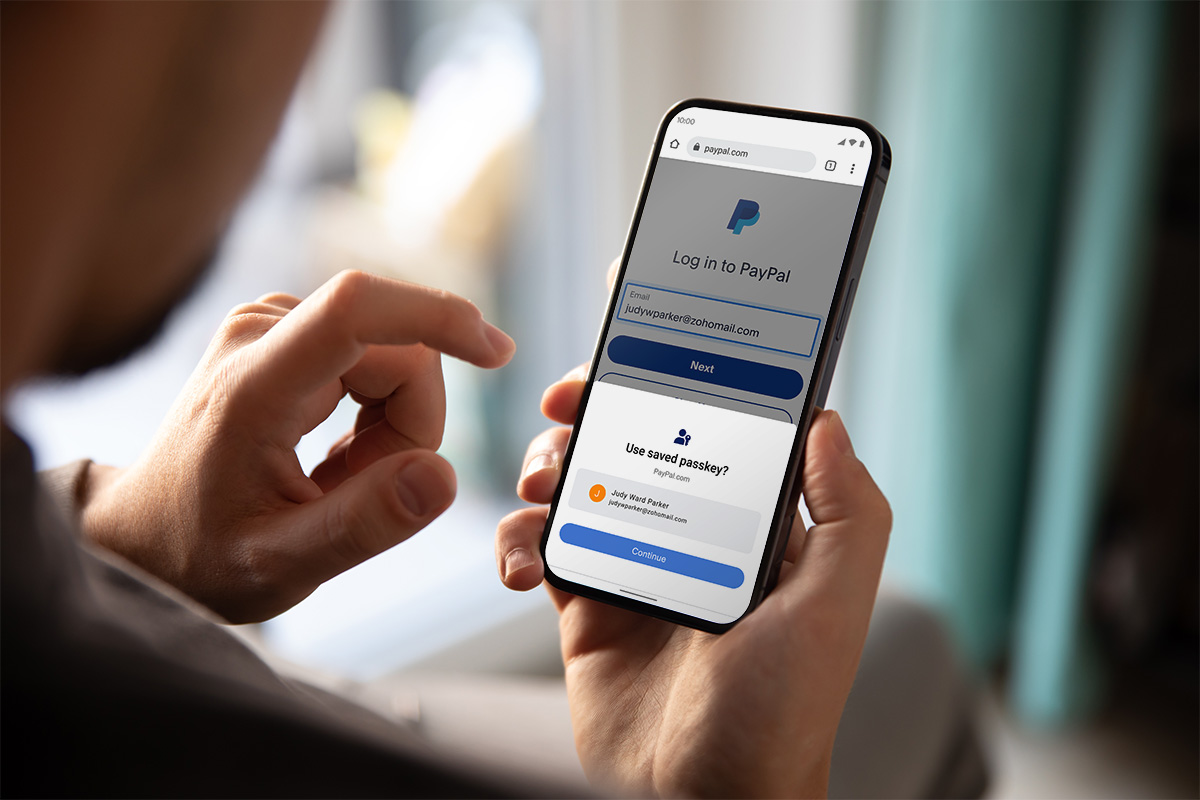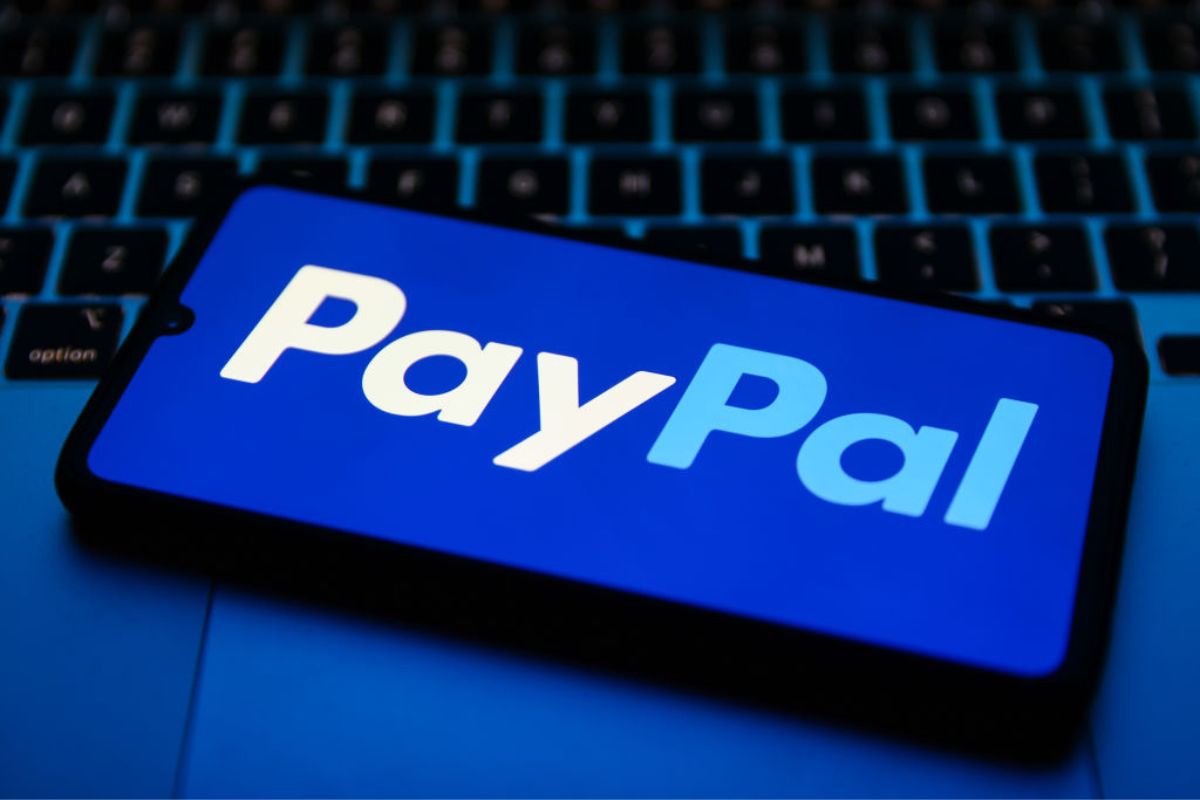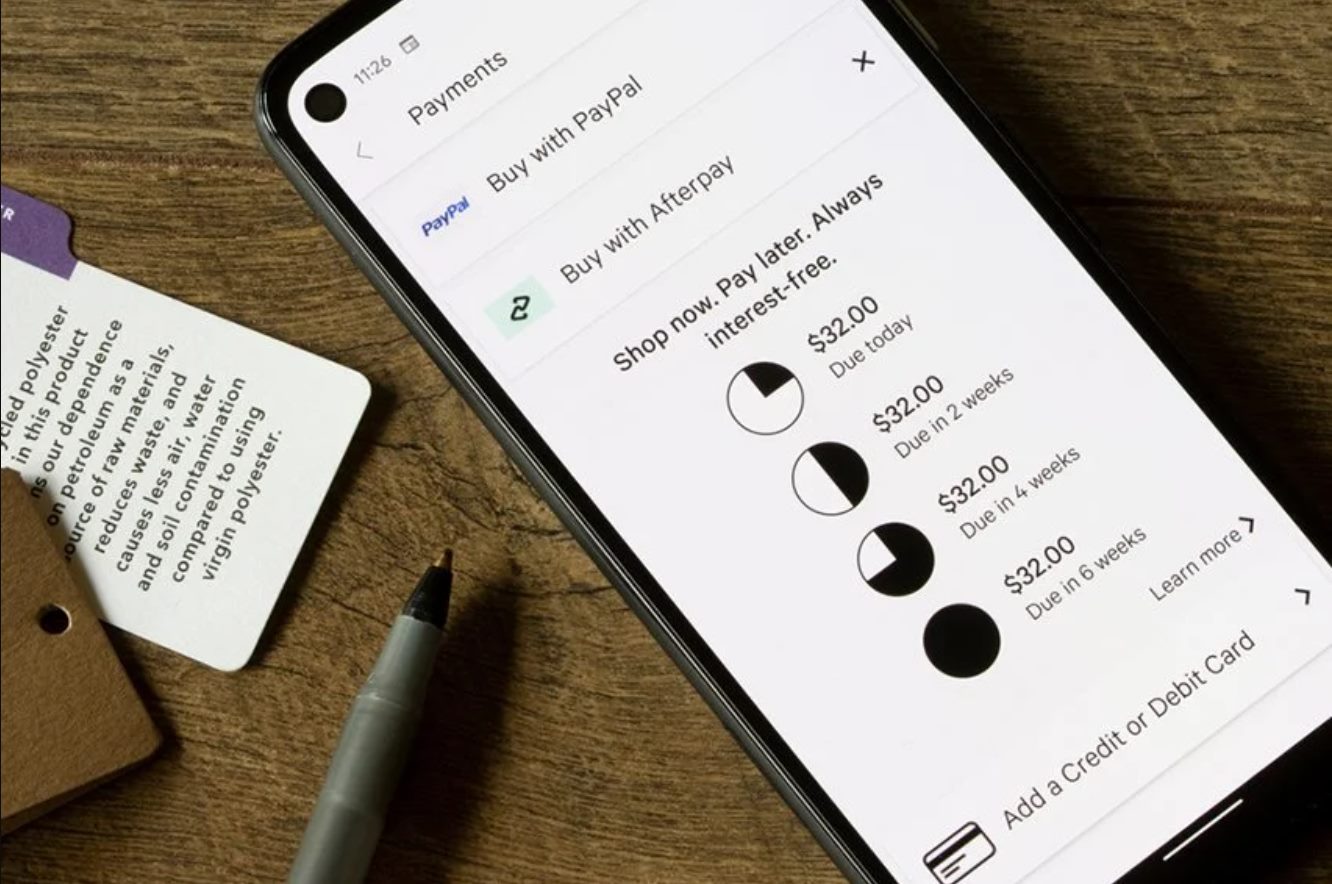Introduction
Welcome to our comprehensive guide on how to prevent PayPal chargebacks. As an online business owner, you must be familiar with the challenges posed by chargebacks, which can have a significant impact on your PayPal account and your bottom line. In this article, we will explore the concept of chargebacks, understand the reasons behind them, and most importantly, provide you with valuable tips and strategies to minimize the occurrence of chargebacks on your PayPal transactions.
Chargebacks are essentially a form of consumer protection that allows buyers to dispute a transaction and request a refund directly from their credit card company or bank. While chargebacks are designed to safeguard consumers against fraudulent transactions or unsatisfactory purchases, they can sometimes be misused by unscrupulous buyers, leading to financial losses for merchants.
When a chargeback occurs, the funds from the disputed transaction are refunded to the buyer, and the merchant is typically required to cover the chargeback fee imposed by PayPal. In addition to the financial impact, chargebacks can also negatively affect your business reputation and may result in account limitations or even suspension if they occur frequently.
Preventing chargebacks on PayPal requires a proactive approach and implementing effective measures to mitigate the risk. In the following sections, we will outline various tips and best practices that you can incorporate into your business operations to reduce the likelihood of chargebacks and protect both your revenue and reputation.
Understanding Chargebacks
Before delving into the strategies to prevent chargebacks, it’s crucial to have a clear understanding of what chargebacks are and how they work. A chargeback is a transaction reversal initiated by the cardholder or the cardholder’s bank. It allows the cardholder to dispute a transaction, seeking a refund from the merchant. In the case of PayPal, chargebacks can occur when a buyer files a complaint or raises a dispute against a transaction.
There are various reasons why a buyer may choose to initiate a chargeback. Some common scenarios include cases of fraud, identity theft, unauthorized transactions, dissatisfaction with the product or service received, delivery issues, and billing errors. It’s important to note that while chargebacks are primarily intended to protect consumers, they can also be misused by unscrupulous individuals to obtain goods or services for free, resulting in financial losses for merchants.
The chargeback process typically involves several parties, including the buyer, the buyer’s bank, the merchant, and the payment processor such as PayPal. When a buyer files a chargeback, PayPal will notify the merchant and request evidence to support the validity of the transaction. The merchant must then provide compelling documentation, such as proof of delivery, communication records, or evidence of a valid transaction to dispute the chargeback.
It’s important to understand that chargebacks can have significant consequences for merchants. Apart from the financial loss incurred from the refunded transaction and chargeback fee, frequent chargebacks can result in additional penalties, such as increased transaction costs or even the suspension or termination of your PayPal account. Therefore, it is crucial for online merchants to actively take steps to prevent chargebacks and protect their businesses.
Reasons for Chargebacks
Chargebacks can occur due to a variety of reasons, and it’s essential for online merchants to be aware of these factors to effectively prevent them. By understanding the common causes of chargebacks, you can take appropriate measures to address and minimize their occurrence. Here are some of the main reasons why chargebacks may arise:
- Fraudulent Transactions: Chargebacks can result from fraudulent activity, such as stolen credit card information or identity theft. In such cases, the legitimate cardholder may dispute the transaction, leading to a chargeback.
- Unrecognized Transactions: Sometimes, buyers may fail to recognize a transaction on their credit card statement, especially if the merchant’s name or transaction description is unfamiliar. This can lead to confusion and result in a chargeback.
- Product or Service Dissatisfaction: If a buyer receives a product or service that does not meet their expectations or is different from what was advertised, they may initiate a chargeback to seek a refund.
- Delivery Issues: In cases where the buyer did not receive the purchased item or the delivery was significantly delayed, they may file a chargeback as a means to reclaim their funds.
- Technical Errors: Sometimes, technical glitches or errors during the transaction process can result in double charges or wrong amounts being billed. Buyers may dispute these errors and issue a chargeback.
- Unauthorized Transactions: If a buyer’s credit card is used without their consent, they have the right to dispute the transaction and request a chargeback to recover their funds.
- Subscription Cancellations: Failure to cancel a recurring subscription or membership can lead to chargebacks as buyers may not have realized they were being charged.
It’s important to note that chargebacks can be both intentional and unintentional. While some buyers may misuse chargebacks to obtain goods or services without paying, others may genuinely have concerns or issues with their purchases. Regardless of the reason, chargebacks can have a significant impact on merchants, including financial loss, damage to reputation, and increased transaction costs.
How Chargebacks Affect Your PayPal Account
Chargebacks can have several negative ramifications for your PayPal account, and it’s crucial to understand their impact to effectively manage and prevent them. While chargebacks are designed to protect buyers, excessive chargebacks can disrupt your business operations and result in financial losses. Here are the main ways in which chargebacks can affect your PayPal account:
- Financial Loss: When a chargeback occurs, PayPal refunds the disputed amount to the buyer, and as a merchant, you lose both the funds and the product or service that you provided. Additionally, PayPal may charge you a chargeback fee, which can add to your financial burden.
- Account Limitations: Frequent chargebacks can trigger account limitations or even account suspension by PayPal. This can temporarily or permanently restrict your ability to send or receive payments and can severely impact your business’s ability to operate smoothly.
- Increased Transaction Costs: In response to a high chargeback rate, PayPal may impose additional fees or higher transaction costs to mitigate the risk associated with your account. This can eat into your profit margins and make your business less competitive.
- Negative Reputation: Excessive chargebacks can damage your business reputation. Potential customers may perceive your business as unreliable or untrustworthy if they see a pattern of chargebacks associated with your account. This can lead to a loss of potential customers and reduced sales.
- Difficulty Obtaining Merchant Accounts: If your PayPal account has a history of chargebacks, it may become difficult for you to obtain merchant accounts with other payment processors. This can limit your options and hinder your ability to expand or diversify your payment methods.
- Disruptions to Cash Flow: Chargebacks can cause disruptions to your cash flow, as the refunded amount is deducted from your account. This can affect your ability to meet financial obligations, such as paying suppliers or covering operational expenses.
It’s important to take chargebacks seriously and implement strategies to prevent them. By proactively addressing the causes of chargebacks and implementing effective preventive measures, you can not only protect your PayPal account but also ensure a smooth and profitable operation for your online business.
Tips to Prevent Chargebacks on PayPal
Preventing chargebacks on PayPal requires a proactive approach and implementing effective measures to minimize the occurrence of disputes. By following these tips and best practices, you can significantly reduce the risk of chargebacks and protect your PayPal account:
- Provide Accurate Descriptions and Images: Clearly and accurately describe your products or services, including their features, specifications, and any potential limitations. Use high-quality images that represent the product accurately to avoid any customer confusion or dissatisfaction.
- Communicate with Customers Promptly: Respond to customer inquiries and concerns promptly and professionally. Clear communication can help address issues before they escalate into chargebacks, and it also demonstrates your commitment to customer satisfaction.
- Offer Excellent Customer Service: Provide exceptional customer service throughout the transaction process, from pre-purchase assistance to post-purchase support. By promptly addressing customer concerns, you can resolve issues before they result in chargebacks.
- Use Dispute Resolution and Reversal Steps: PayPal provides a dispute resolution process that allows buyers and sellers to resolve issues without going through chargebacks. Familiarize yourself with this process and utilize it whenever necessary.
- Implement Fraud Prevention Measures: Implement robust fraud prevention measures, such as address verification, CVV verification, and identity verification procedures. These measures can help detect and prevent fraudulent transactions.
- Utilize Delivery Confirmation Services: Use delivery confirmation services like signature on delivery or tracking numbers for shipped items. These services provide proof of delivery and can help you dispute chargebacks related to delivery issues or claims of non-receipt.
- Clearly Display Policies and Terms of Sale: Clearly state your refund, return, and cancellation policies, as well as any terms and conditions, on your website or during the checkout process. By ensuring transparency, you set clear expectations for buyers, reducing the chances of chargeback disputes.
- Verify Buyer Information: Take steps to verify the identity and legitimacy of your customers. Use address verification services, request additional identification documents, or conduct manual reviews for high-risk transactions.
- Maintain a Good Business Reputation: Focus on building a positive reputation for your business by consistently delivering high-quality products and excellent customer service. Satisfied customers are less likely to initiate chargebacks.
- Consider Additional Security Measures: Explore additional security measures, such as 3D Secure authentication or implementing an advanced fraud detection system, to protect your PayPal transactions from malicious activities and unauthorized use.
By implementing these preventative measures, you can reduce the likelihood of chargebacks on your PayPal transactions. Remember, prevention is key, and investing time and effort into preventing chargebacks can save you money, protect your reputation, and ensure the long-term success of your online business.
Provide Accurate Descriptions and Images
When selling products or services on PayPal, providing accurate descriptions and high-quality images is crucial in preventing chargebacks. Clear and detailed product descriptions help set proper expectations for buyers, ensuring they know exactly what they are purchasing. By accurately representing your offerings, you can reduce the chances of misunderstandings or dissatisfaction that can lead to chargebacks. Here are some tips to provide accurate descriptions and images:
- Be Detailed and Transparent: Provide comprehensive details about your products or services, including their features, specifications, dimensions, materials used, and any potential limitations. The more information you provide, the better-informed buyers will be, making them less likely to dispute the transaction.
- Use Clear and Concise Language: Write descriptions using simple and easy-to-understand language. Avoid using technical jargon or complex terms that may confuse buyers. Use bullet points or subheadings to organize important details and make them easily scannable.
- Highlight Unique Selling Points: Emphasize the key benefits or unique aspects of your products or services. Explain how they stand out from competitors and what value they bring to the buyer. This can help differentiate your offerings and increase buyer satisfaction.
- Provide Accurate Sizing Information: If you are selling products that come in different sizes or measurements, ensure you provide accurate sizing information. Include measurements, size charts, or reference guides to help buyers choose the correct size. This can help avoid issues related to the wrong fit or size discrepancy.
- Include Multiple High-Quality Images: Visuals play a crucial role in online purchases. Take high-resolution images from different angles and perspectives to showcase the product accurately. If applicable, include zoom features or alternate views to provide a better understanding of the product’s appearance.
- Show Product Variations: If your products are available in different colors, styles, or options, depict each variation clearly. Use images or dropdown menus to allow buyers to select their preferred options. This helps avoid confusion and ensures that the buyer receives exactly what they expect.
- Disclose Any Imperfections or Defects: If your products have any imperfections, defects, or possible issues, clearly disclose them in the description. Being transparent about potential faults can help manage buyer expectations and reduce the likelihood of disputes or chargebacks.
- Update Descriptions and Images: Regularly review and update your product descriptions and images to ensure they accurately represent your current offerings. Remove or update any outdated information or images that no longer reflect the product you are selling.
By providing accurate descriptions and detailed images, you can establish trust with your buyers and reduce the risk of chargebacks caused by buyer misunderstandings or dissatisfaction. Take the time to create thorough and appealing product descriptions to enhance the overall buying experience on PayPal.
Communicate with Customers Promptly
Effective communication is key to preventing chargebacks on PayPal. By promptly and effectively addressing customer inquiries, concerns, or issues, you can build trust, resolve potential disputes, and reduce the likelihood of chargebacks. Here are some important tips to improve your communication with customers:
- Respond in a Timely Manner: Aim to respond to customer inquiries or messages as quickly as possible. Prompt response times demonstrate your commitment to customer satisfaction and can help address concerns before they escalate into chargebacks.
- Be Professional and Courteous: Maintain a professional and respectful tone in all interactions with customers. Even if faced with difficult or unhappy customers, remain calm and courteous, seeking to find a resolution that satisfies both parties.
- Listen Empathetically: Practice active listening when communicating with customers. Allow them to express their concerns fully and show understanding of their perspective. Empathy and attentive listening can go a long way in diffusing potential conflicts.
- Provide Accurate and Helpful Information: Ensure that your responses to customer inquiries are accurate, comprehensive, and helpful. Provide clear solutions or guidance to address their concerns and provide any necessary instructions or support they may need.
- Offer Special Assistance or Incentives: In cases where customers have expressed dissatisfaction or encountered issues, consider offering special assistance, such as free returns, extended warranties, or discounts on future purchases. This proactive approach can help turn a potentially negative situation into a positive one.
- Use Multiple Communication Channels: Offer various channels for customers to contact you, such as email, phone, or live chat. This ensures that customers can reach you through their preferred method, making it easier for them to ask questions or address concerns.
- Document All Communications: Keep thorough records of all customer communications, including emails, messages, or phone calls. This documentation can serve as evidence in case of disputes or chargebacks, helping to support your position and validate the information provided to customers.
- Follow Up and Follow Through: Once a customer’s issue has been resolved or a solution has been provided, follow up to ensure their satisfaction and ask if they need any further assistance. This shows your commitment to customer care and can help prevent unresolved issues from resurfacing as chargebacks later on.
By prioritizing prompt and effective communication with customers, you can address their concerns, resolve disputes, and maintain a positive relationship. Effective communication not only reduces the risk of chargebacks but also enhances the overall buying experience, leading to increased customer loyalty and satisfaction on PayPal.
Offer Excellent Customer Service
Providing excellent customer service is not only crucial for your business success but also plays a significant role in preventing chargebacks on PayPal. When customers have a positive experience with your service, they are less likely to file disputes or initiate chargebacks. To ensure top-notch customer service, consider the following tips:
- Be Responsive: Respond to customer inquiries, concerns, or issues in a timely and efficient manner. Aim to address their questions or problems as quickly as possible, showing that their satisfaction is your priority.
- Be Knowledgeable: Ensure that you and your customer service team are well-informed about your products or services. Having a deep understanding of what you offer allows you to provide accurate information, answer queries, and guide customers effectively.
- Train Your Staff: Provide comprehensive training to your customer service representatives to equip them with the necessary knowledge and skills to address customer concerns. This includes teaching them how to handle difficult situations, remain calm under pressure, and find appropriate resolutions.
- Exceed Expectations: Go the extra mile in providing exceptional service to your customers. This can include offering personalized recommendations, providing unexpected bonuses or discounts, or following up after a purchase to ensure customer satisfaction.
- Be Proactive: Anticipate potential issues or concerns that customers may face and address them proactively. For example, if a shipment may be delayed, communicate this information to the customer in advance and provide updates along the way.
- Own Up to Mistakes: If your business makes a mistake or a customer has a negative experience, take ownership of the situation and work to resolve it promptly. Apologize sincerely, offer compensation if appropriate, and take steps to prevent similar issues in the future.
- Maintain a Positive Attitude: Approach customer interactions with a positive and empathetic attitude, even if the customer may be frustrated or upset. Your demeanor can influence the outcome of the interaction and help defuse tense situations.
- Seek Feedback: Encourage customers to provide feedback on their experiences with your business. This can be in the form of surveys, reviews, or testimonials. Use this feedback to identify areas for improvement and make necessary adjustments to enhance your customer service.
- Continuously Improve: Regularly review and update your customer service policies and procedures based on customer feedback and evolving industry standards. Strive for continuous improvement to ensure that your customer service remains exceptional.
- Empower Your Customers: Provide self-service options and resources so that customers can find answers to common questions or solve minor issues on their own. This can include FAQs, knowledge bases, or easy-to-navigate website interfaces.
By offering excellent customer service on PayPal, you not only create a positive buying experience but also build customer trust and loyalty. Happy customers are less likely to resort to filing chargebacks, resulting in a smoother and more successful business transaction on PayPal.
Use Dispute Resolution and Reversal Steps
When disputes arise on PayPal, it’s essential to utilize the available dispute resolution and reversal steps to address customer concerns effectively and avoid chargebacks. PayPal provides a structured process that allows buyers and sellers to resolve issues before they escalate further. Here are some key steps to consider:
- Understand PayPal’s Dispute Resolution Process: Familiarize yourself with PayPal’s dispute resolution process. This includes understanding the different types of disputes, their time frames, and the evidence requirements to support your position as a seller.
- Respond Promptly to Disputes: When a dispute is initiated by a buyer, respond promptly and within the specified timeline set by PayPal. Address the issue raised by the buyer and provide any necessary evidence or documentation to support your case.
- Provide Clear and Convincing Evidence: Gather and submit evidence that demonstrates the validity of your transaction and supports your position. This can include order receipts, shipping confirmations, communication records, or any other relevant documentation.
- Maintain Professionalism: Keep communication with the buyer professional and courteous throughout the dispute resolution process. Be cooperative, provide clear explanations, and work towards finding a mutually acceptable resolution.
- Utilize PayPal’s Mediation Services: If the initial attempts at resolving the dispute do not lead to a satisfactory outcome, consider escalating the case to PayPal’s mediation services. This involves an impartial third party who can review the evidence and provide a resolution.
- Consider Offering Partial Refunds or Discounts: In cases where a compromise is possible or if the customer has a legitimate concern, you may choose to offer a partial refund or a discount as an alternative to a full chargeback.
- Follow PayPal’s Reversal Steps: If a chargeback is initiated by the buyer, follow PayPal’s guidelines for reversing the charges. Provide all necessary information and evidence to support your case and demonstrate that the transaction was legitimate and fulfilled as agreed.
- Keep Detailed Records: Maintain comprehensive records of all communication, evidence, and dispute resolutions related to customer transactions. These records serve as important documentation in case of future disputes or chargebacks.
- Learn from Disputes: Analyze the nature of disputes that arise and identify any recurring patterns or issues. Use these insights to improve your products, services, or processes to minimize the likelihood of future disputes and chargebacks.
- Stay Informed about PayPal’s Policies: Stay updated on PayPal’s policies and any changes or updates that may affect dispute resolution processes. This knowledge will help you navigate potential disputes and take appropriate actions.
By actively participating in the dispute resolution process and utilizing PayPal’s available tools and services, you can address buyer concerns, find suitable resolutions, and reduce the likelihood of chargebacks on PayPal transactions.
Implement Fraud Prevention Measures
Protecting your PayPal account from fraudulent activities is essential in preventing chargebacks. Implementing fraud prevention measures can help you identify and mitigate potential risks, ensuring that you only process legitimate transactions. Consider the following tips to enhance your fraud prevention efforts:
- Use Address Verification (AVS): Enable Address Verification Service (AVS) to validate the billing address provided by the buyer during the checkout process. This helps confirm that the address matches the one on file with the card issuer, reducing the risk of fraudulent transactions.
- Enable CVV Verification: Require buyers to enter the Card Verification Value (CVV) code, a three-digit security code on the back of the credit card. This helps ensure that the buyer has the physical card in their possession, deterring fraudsters who may have stolen card information.
- Implement IP Geolocation: Utilize IP geolocation technology to verify the geographic location of the buyer’s IP address. This helps identify potential discrepancies or high-risk locations associated with fraudulent activities.
- Employ Device Fingerprinting: Implement device fingerprinting technology to identify and track devices used in transactions. This helps detect anomalies or patterns associated with suspicious activities and known fraudulent devices.
- Monitor Unusual Behavior: Monitor for any unusual or high-risk behavior during transactions, such as multiple failed login attempts, multiple orders with different shipping addresses, or unusually high order values. These may be indicators of fraudulent activity.
- Utilize Fraud Detection Services: Consider integrating third-party fraud detection services into your payment process to enhance your defenses against fraudulent transactions. These services leverage advanced algorithms and machine learning to identify patterns and provide real-time risk assessments.
- Require Strong Customer Authentication (SCA): Adhere to Strong Customer Authentication (SCA) requirements, as mandated by regulatory authorities for certain transactions. This involves using two-factor authentication or biometric verification to ensure the security and integrity of the transaction.
- Stay Vigilant with High-Risk Orders: Exercise caution when processing high-risk orders, such as those involving high-value items, expedited shipping, or international transactions. Conduct additional verification or ask for additional identification documents to confirm the legitimacy of the transaction.
- Stay Informed about Fraud Trends: Stay up-to-date with the latest fraud trends, techniques, and vulnerabilities. Regularly educate yourself and your team on emerging fraud schemes to tailor your fraud prevention measures accordingly.
Implementing robust fraud prevention measures helps protect your PayPal account and your customers’ sensitive information, reducing the risk of chargebacks resulting from fraudulent transactions. By proactively detecting and preventing fraud, you create a safer environment for online transactions and instill trust in your buyers.
Utilize Delivery Confirmation Services
Utilizing delivery confirmation services is an effective way to prevent chargebacks related to delivery issues and claims of non-receipt. By implementing these services, you can provide proof of delivery, ensuring transparency and minimizing the risk of disputes. Consider the following tips when utilizing delivery confirmation services:
- Choose a Reliable Shipping Service: Select a reputable shipping service that offers reliable tracking and delivery confirmation. Look for carriers that provide online tracking capabilities and proof of delivery documentation.
- Require Signature on Delivery: Opt for signature confirmation, especially for high-value items or orders that are more prone to chargebacks. This ensures that the buyer or an authorized recipient acknowledges receipt of the package, strengthening your position in case of disputes.
- Track Shipments in Real Time: Keep track of your shipments through the carrier’s online tracking system. Monitor their progress and ensure timely delivery. Proactively communicate with buyers about the tracking information to alleviate any concerns they may have.
- Keep Documentation of Shipments: Maintain detailed documentation of each shipment, including tracking numbers, shipping receipts, and proof of delivery. These records serve as crucial evidence to support your case in case of chargeback disputes.
- Communicate Delivery Expectations: Clearly communicate the estimated delivery time and any potential delays to the buyer. Set realistic expectations to avoid misunderstandings and customer dissatisfaction that can lead to chargebacks.
- Resolve Delivery Issues Promptly: If a delivery issue does arise, such as a delayed shipment or a package that appears to be lost, address the issue promptly. Communicate with the buyer, initiate a follow-up with the shipping carrier, and provide updates until the issue is resolved.
- Consider Insurance Coverage: Depending on the value of the shipped items, consider obtaining insurance coverage to protect against potential loss or damage during transit. This provides an extra layer of security and may alleviate the need for chargebacks in case of unforeseen circumstances.
- Keep Proof of Fragile Packaging: If you sell fragile items, take photographs or videos of the packaging process to demonstrate that you took appropriate precautions to protect the items. This can help defend against fraudulent claims related to damaged goods.
- Insist on Accurate Return Tracking: If a buyer requests a return or refund, require them to provide a tracking number for the returned package. This allows you to track the return shipment and verify its receipt before issuing a refund, minimizing the risk of fraudulent return claims.
- Resolve Disputes with Proof: In the event of a chargeback dispute related to non-receipt or delivery issues, provide the gathered documentation, including tracking information and proof of delivery, to PayPal. This evidence strengthens your position and increases the likelihood of a favorable outcome.
By utilizing delivery confirmation services, you can provide evidence of successful package delivery, reducing the risk of chargebacks caused by claims of non-receipt or delivery issues. These services enhance transparency and build trust between you and your buyers, ensuring smoother transactions on PayPal.
Clearly Display Policies and Terms of Sale
Clear and accessible policies and terms of sale are essential in preventing chargebacks and disputes on PayPal. By providing transparent information about your business practices, refund policies, shipping procedures, and other relevant terms, you can manage customer expectations and minimize the likelihood of misunderstandings. Consider the following tips when displaying your policies and terms of sale:
- Have a Dedicated Policy Page: Create a dedicated page on your website or online store that clearly outlines your policies, including refund and return policies, cancellation procedures, shipping terms, and any other relevant information. Make sure the page is easily accessible from your main navigation menu.
- Make Policies Easy to Understand: Use clear and simple language when describing your policies to ensure that customers can easily understand them. Avoid using legal jargon or complex terminology that may confuse or discourage customers from reading your policies.
- Highlight Key Points: Use headings, subheadings, and bullet points to highlight the important details within each policy section. This helps customers quickly locate and understand the key terms and conditions of their purchase.
- Specify Refund and Return Procedures: Clearly state how customers can request a refund or initiate a return. Include information about the timeframe for returns, any restocking fees, and the condition in which the item must be returned.
- Explain Shipping and Delivery Expectations: Clearly communicate the estimated shipping times, available shipping methods, and any potential delays that customers may expect. Be transparent about shipping fees, international shipping restrictions, and any additional customs or import charges.
- Include Warranty Information: If applicable, provide details about product warranties or guarantees, including the duration and coverage. Clearly communicate the process for claiming warranty services and any restrictions or requirements.
- Address Privacy and Data Protection: Assure customers that their personal information is secure and protected. Clearly outline your privacy policy, addressing how customer data is collected, used, and stored, as well as any third-party involvement.
- Display Terms and Conditions at Checkout: Ensure that customers have to acknowledge and agree to your terms of sale before completing their purchase. Include checkboxes or opt-in statements on your checkout page to confirm their acceptance.
- Update Policies as Needed: Regularly review and update your policies when necessary. If you make any changes to your terms or procedures, clearly communicate the updates to customers and require their acknowledgment.
- Make Policies Clearly Visible: Use a consistent and prominent location on your website to display links to your policies, such as the header, footer, or a dedicated section within your product pages. This ensures that customers can easily find and access the information they need.
By clearly displaying your policies and terms of sale, you set clear expectations for your customers and reduce the risk of misunderstandings or disputes leading to chargebacks. Transparent policies also demonstrate your commitment to fair business practices and customer satisfaction on PayPal.
Verify Buyer Information
Verifying buyer information is an important step in preventing fraudulent transactions and chargebacks on PayPal. By implementing measures to verify the identity and legitimacy of your buyers, you can significantly reduce the risk of fraudulent activities. Here are some tips to help you verify buyer information effectively:
- Collect Complete and Accurate Buyer Information: Require buyers to provide comprehensive information during the checkout process, including their full name, billing address, contact details, and any other necessary information for verification.
- Match Billing and Shipping Addresses: Ensure that the billing address provided by the buyer matches the address associated with the credit card or payment method used for the transaction. Mismatches can be a potential red flag for fraudulent activity.
- Perform Address Verification: Utilize address verification services, such as AVS (Address Verification Service), to compare the buyer’s provided address with the address on file with the card issuer. This helps confirm the authenticity of the buyer’s information.
- Implement Phone Verification: Consider incorporating phone verification as an additional layer of security. Contact buyers via phone to verify their identity or request a callback to confirm their contact details.
- Review Order History and Behavior: Keep track of buyer order history and behavior within your business. Look for any unusual patterns, such as frequent orders with different shipping addresses or ordering high-value items consistently, which may indicate fraudulent activity.
- Use Fraud Detection Tools: Implement fraud detection tools or services that analyze buyer information and transaction behavior for potential fraud indicators. These tools utilize algorithms to identify suspicious activities and flag high-risk transactions.
- Utilize Identity Verification Services: Consider using third-party identity verification services that use advanced technologies to verify the authenticity of buyer information. These services can perform comprehensive ID checks and provide additional layers of verification.
- Request Additional Documentation: In cases where additional verification is necessary, ask buyers for supporting documents such as a scanned copy of their ID, driver’s license, or passport. This helps confirm their identity and legitimacy.
- Monitor for Proxy or VPN use: Be vigilant about buyers using proxy servers or VPNs to hide their true location or identity. This can be a sign of fraudulent intent, and additional verification steps may be necessary.
- Stay Informed about Fraudulent Techniques: Keep up-to-date on common fraud techniques and regularly educate yourself and your team. This knowledge will help you recognize potential red flags and take appropriate measures to prevent fraudulent transactions.
By verifying buyer information, you can significantly reduce the risk of fraudulent transactions and chargebacks on PayPal. Implementing these verification measures adds an extra layer of security and helps ensure the authenticity and legitimacy of your buyers.
Maintain a Good Business Reputation
Maintaining a good business reputation is crucial in preventing chargebacks on PayPal. A positive reputation not only helps attract and retain customers but also builds trust and credibility. By prioritizing customer satisfaction and upholding high business standards, you can minimize the risk of disputes and chargebacks. Here are some tips to help you maintain a good business reputation:
- Provide High-Quality Products and Services: Consistently deliver products or services that meet or exceed customer expectations. Focus on quality, reliability, and customer satisfaction to create positive experiences.
- Deliver Orders on Time: Ensure timely order processing, accurate fulfillment, and prompt shipping. Communicate any delays or issues proactively to manage customer expectations and maintain transparency.
- Respond to Customer Inquiries Promptly: Address customer inquiries, concerns, or complaints promptly and professionally. Prompt responses demonstrate your commitment to customer satisfaction and help prevent issues from escalating to chargebacks.
- Resolve Issues and Complaints Fairly: Take a fair and objective approach when addressing customer issues or complaints. Seek resolutions that are reasonable for both parties, aiming for customer satisfaction and minimizing the need for chargebacks.
- Be Transparent and Honest: Practice transparency in your business practices, pricing, and policies. Clearly communicate product or service details, pricing structures, refund policies, and other terms to avoid misunderstandings and promote trust.
- Cultivate Positive Customer Relationships: Build strong relationships with your customers by showing appreciation for their business. Provide personalized communication, follow-up emails, and exclusive offers to foster loyalty and a positive perception of your brand.
- Encourage Customer Feedback and Reviews: Request feedback from your customers and encourage them to leave reviews or testimonials. Positive reviews and ratings can strengthen your reputation and demonstrate your commitment to customer satisfaction.
- Maintain Open and Transparent Communication Channels: Make it easy for customers to reach you. Provide multiple contact options, such as email, phone, or live chat, and respond promptly to inquiries or concerns.
- Monitor and Manage Online Reviews and Social Media: Regularly monitor online reviews and comments about your business on platforms and social media channels. Address any negative feedback promptly and professionally to show your dedication to customer service.
- Stay Active in Building Industry Connections: Participate in industry events, join professional associations, and engage in networking opportunities. Building connections and a positive reputation within your industry can lend credibility and trust to your business.
By maintaining a good business reputation, you establish trust with your customers and reduce the likelihood of disputes and chargebacks. Prioritize customer satisfaction, provide exceptional service, and foster positive relationships to uphold your reputation on PayPal.
Consider Additional Security Measures
Implementing additional security measures can significantly enhance the protection of your PayPal account and reduce the risk of chargebacks resulting from fraudulent transactions. By taking proactive steps to safeguard customer information and prevent unauthorized access, you demonstrate your commitment to maintaining a secure and trustworthy online business. Consider the following security measures:
- Use Two-Factor Authentication (2FA): Enable two-factor authentication for your PayPal account. This adds an extra layer of security by requiring users to provide a second form of verification, such as a unique code sent to their mobile device, in addition to their password.
- Secure Your Website: Ensure that your website is secured with SSL (Secure Sockets Layer) certificates, indicated by the lock icon in the browser’s address bar. SSL encryption protects sensitive data transmitted between the customer’s browser and your website.
- Encrypt Customer Data: Implement strong encryption protocols to protect customer data stored on your servers or within your systems. Utilize industry-standard encryption algorithms to ensure the confidentiality and integrity of customer information.
- Regularly Update Software and Plugins: Keep your website’s software, platforms, and plugins up to date. Regularly apply security patches and updates provided by the vendors to address any known vulnerabilities and protect against potential exploits.
- Monitor and Analyze User Activities: Utilize security monitoring tools and log analysis to detect and respond to any suspicious activities or unauthorized access attempts. This allows you to identify potential security threats and mitigate risks promptly.
- Implement Account Access Controls: Limit access privileges to sensitive areas of your website or PayPal account. Grant access only to authorized personnel and regularly review and revoke access for former employees or third-party vendors who no longer require it.
- Train Staff on Security Best Practices: Educate your employees on security best practices, such as using strong passwords, recognizing phishing attempts, and handling customer data responsibly. Regular training and awareness programs help minimize the risk of human errors that can lead to security breaches.
- Use Firewall and Intrusion Detection Systems (IDS): Employ robust firewall solutions and intrusion detection systems to monitor and prevent unauthorized access attempts and suspicious network activities. These tools provide an additional layer of protection against external threats.
- Regularly Back Up Data: Perform regular backups of your website and customer data to protect against potential data loss or breaches. Store backups securely, separate from your main server, to ensure quick recovery in the event of a security incident.
- Stay Informed about Security Threats: Keep up to date with the latest security threats, vulnerabilities, and best practices in the industry. Stay informed about emerging threats, new attack vectors, and recommended security measures to ensure that your security defenses remain strong.
By considering and implementing additional security measures, you enhance the overall protection of your PayPal account, customer data, and transactions. Robust security measures not only reduce the risk of chargebacks but also build trust and credibility with your customers, fostering long-term relationships on PayPal.
Conclusion
Preventing chargebacks on PayPal is crucial for the success and sustainability of your online business. By understanding the concept of chargebacks, the reasons behind them, and their potential impact on your PayPal account, you can take proactive steps to minimize their occurrence. Implementing the right strategies and best practices can significantly reduce the risk of chargebacks, protect your revenue, and maintain a positive reputation.
Throughout this guide, we have explored various tips and measures to prevent chargebacks on PayPal. From providing accurate descriptions and images to communicating with customers promptly, offering excellent customer service, and utilizing dispute resolution and reversal steps, each strategy plays a vital role in mitigating the risk of chargebacks.
In addition to these core strategies, implementing fraud prevention measures, utilizing delivery confirmation services, clearly displaying policies and terms of sale, verifying buyer information, maintaining a good business reputation, and considering additional security measures are all essential components of a comprehensive chargeback prevention strategy.
By adopting these practices, you can enhance customer trust, minimize misunderstandings and disputes, and create a secure and reliable environment for conducting business on PayPal. Remember, prevention is key, and investing effort into preventing chargebacks not only protects your bottom line and reputation but also leads to improved customer satisfaction and long-term business growth.










